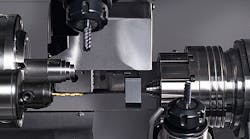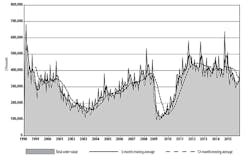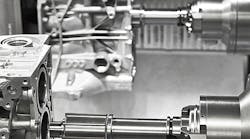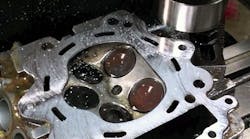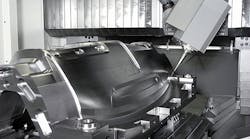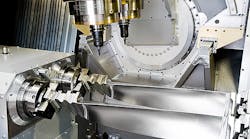U.S. manufacturers ordered $401.16 million worth of machine tool technologies during December 2015, improving 20.7% over the November total, yet coming 21.5% short of the December 2014 total. In all, the full total for 2015 U.S. machine tool orders was $4.188 billion, 17.4% less than the 2014 total.
The data is supplied by AMT – the Association for Manufacturing Technologies in its monthly U.S. Manufacturing Technologies Orders report. USMTO results are based on actual machine tool orders reported by participating companies that produce and distribute metal cutting and metal-forming and –fabricating equipment, including domestically manufactured and imported machinery and equipment. The USMTO is an indicator of capital investment (not manufacturing activity) and represents manufacturers’ confidence in current and developing economic conditions.
The December rebound — it represented the second-highest monthly order total in 2015, after March — was not uncharacteristic, though it closed out a fitful year in which machine tool orders frequently fell short of the previous year’s results. The December 2014 USMTO also registered strong, as buyers moved to place orders before changes in budgets or accounting, or other factors take effect.
“It’s typical for December orders to rise as many companies invest their year-end profits into new equipment, and technology builders and suppliers try to reduce their inventories with discounted products,” commented AMT president Douglas K. Woods.
AMT detailed that December equipment purchases related to defense were helped by the two-year federal budget agreement passed by the U.S. Congress in October (temporarily lifting automatic sequestration), a development the group correctly predicted in its November comments.
In fact, Woods indicated that Q4 2015 showed “better than anticipated” results due to investment by aerospace, automotive, and consumer electronics manufacturers. However, he cautioned that AMT maintains its forecast for weak demand through the first three quarters of 2016, citing a strong U.S. currency (limiting exports) and low oil prices (constraining capital investment in that important sector.)
AMT’s 2016 forecast calls for manufacturing technology orders to finish 2016 up 3% compared to 2015 (or roughly $4.31 billion), in particular with the boost provided by September’s IMTS 2016 event.
The December USMTO report also includes monthly and year-end summaries for each of six regions of the U.S. manufacturing sector. In the Northeast, December new orders fell 5.3% from November to $70.84 million, and -16.4% from December 2014, finishing the year in positive territory – with the region up 1.4% to $807.52 million.
In Southeast, December’s new manufacturing technology orders were $50.33 million. That brought the annual total to $452.48 million, -8.6% compared to the 12-month total for 2014.
In the North Central-East region, December’s order total of $110.13 million was u 12.0% from November but down 34.7% from December 2014. The region’s 12-month order total was $1.19 billion, a 13.5% decline from 2014.
The North Central-West region posted December new orders worth $75.99 million, up 0.6% from December 2014. For the full 12 months, the region’s new orders totaled $770.64 million, down 12.5% from the year earlier.
The South Central region’s new orders were $310.81 million for 2015, down 59.3% versus the 2014 total.
In the West region, total new orders for 2015 were $656.10 million, down 13.7% from the 2014 total.
